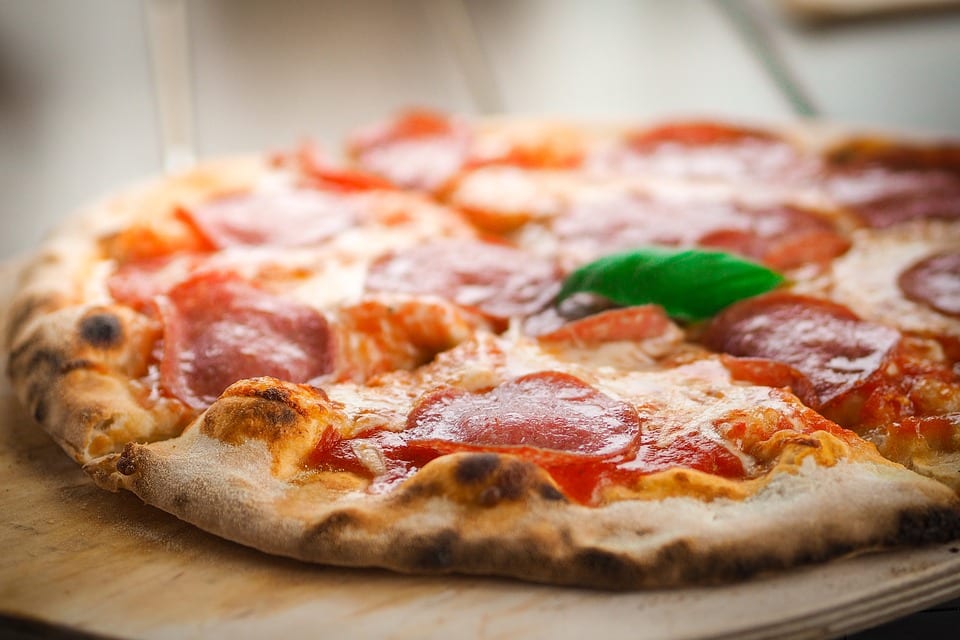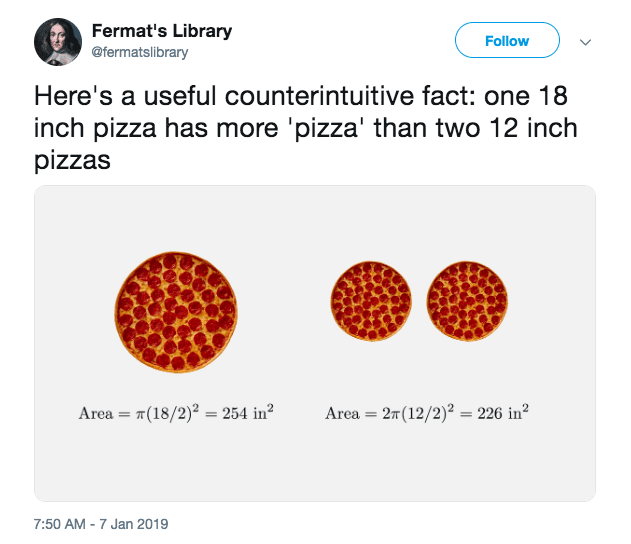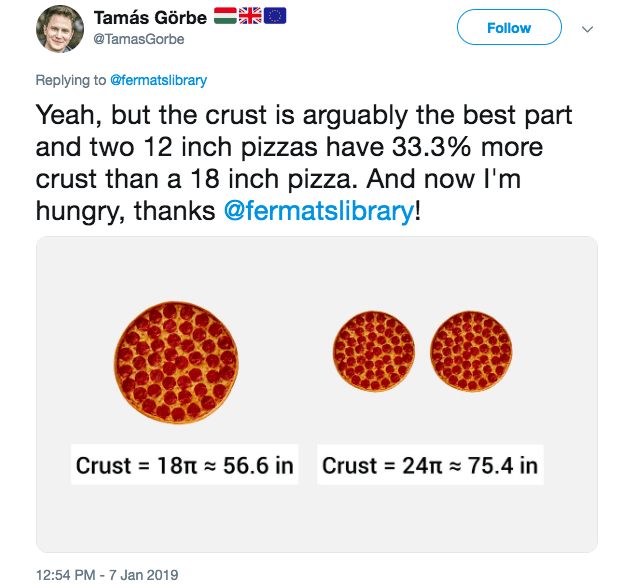When you’ve got a lot of people to feed and you’re ordering pies, do you go for two 12-inch mediums instead of one 18-inch large, since 24 inches is bigger and therefore more? If so, you’re not alone.
I totally do this, and I’m guessing that’s exactly what pizza places want you to do (hello, more cash), but thanks to one intrepid Twitter user willing to do the math, we can all make the correct choice and go back to ordering one big pizza, saving ourselves some dough in the process.
Photo Credit: Pixabay
I mean, assuming everyone can agree on toppings. Pepperoni ftw.
If you’re math-challenged like me, you never would have figured this out for yourself, so I’m going to include a little math-splanation below the tweet.
Photo Credit: Twitter
And this guy, who’s finally getting his money’s worth out of that degree:
Photo Credit: Twitter
The diameter of the large pizza is smaller than the combined diameters of the two medium ones, but the large has the bigger total area. In case you slept through geometry, you calculate the area of a circle by squaring the radius (which is half the diameter) and multiplying by pi (3.1415 etc.).
The area of the 18-inch pizza is 254 square inches – a full 28 square inches larger than the area of two 12-inchers, which is 226.
But but but but! If the crust is your favorite part, you might want to take this into consideration – you do get 33.3% more crusty goodness with the two mediums.
Photo Credit: Twitter
Even though the math is technically not that complicated here, the internet’s mind was still collectively blown.
Photo Credit: Twitter
I mean, how could you not be?
Photo Credit: Twitter
It’s almost enough to make you feel sorry for the pizza joint!
But it definitely makes me want to go order a pizza.
The post This Simple Math Equation Illustrates That If You Want More Pizza, Order 1 Large Pizza, Not 2 Mediums appeared first on UberFacts.













 :
: 
